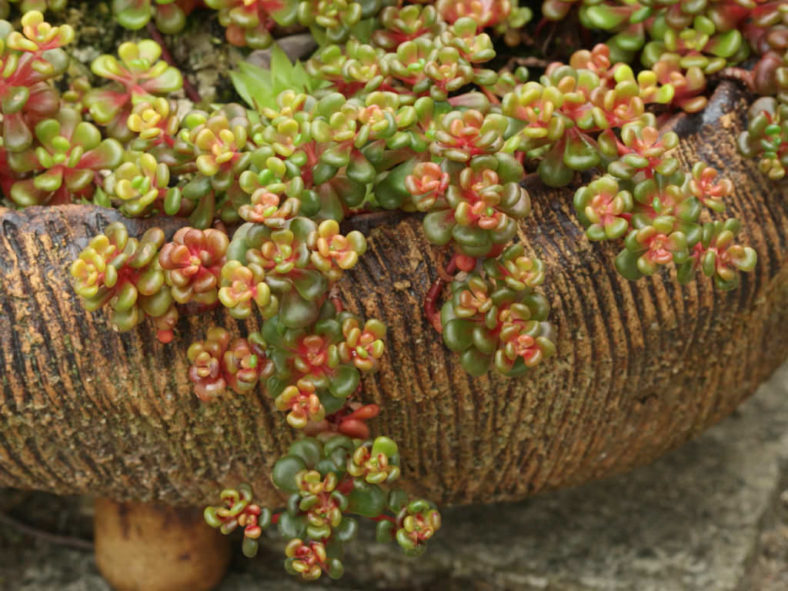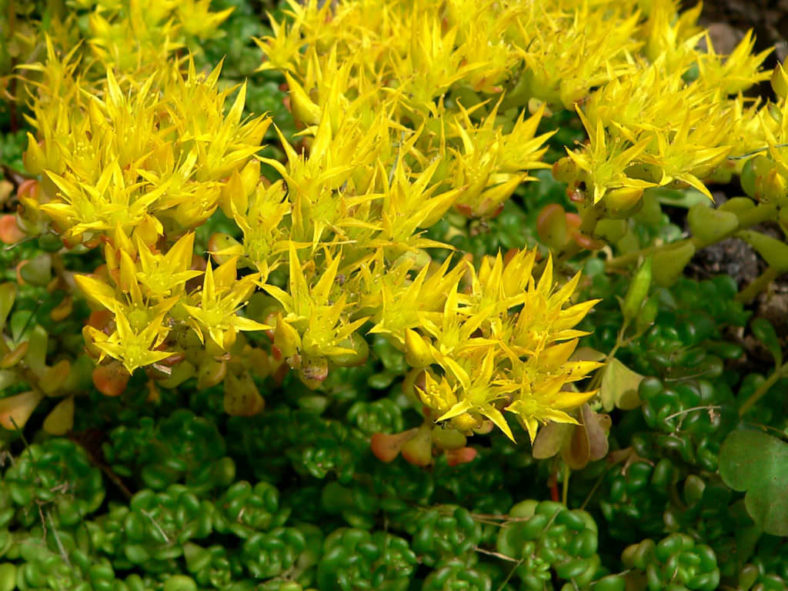Scientific Name
Sedum oreganum Nutt.
Common Name(s)
Green Stonecrop, Oregon Stonecrop
Synonym(s)
Breitungia oregana, Cotyledon oregana, Echeveria oregana, Gormania oregana, Sedum oreganum var. oreganum, Sedum sparsiflorum
Scientific Classification
Family: Crassulaceae
Subfamily: Sempervivoideae
Tribe: Sedeae
Genus: Sedum
Etymology
The specific epithet "oreganum" (pronounced "or-reh-GAH-num") means "of or pertaining to Oregon" and refers to Oregon, a state in the Pacific Northwest region of the United States where this species was first discovered.
Origin
The native range of Sedum oreganum extends from southwestern Canada to the northwestern United States (Alaska to Oregon). It occurs on exposed and sunny coastal bluffs and cliffs at elevations of up to 1,510 feet (460 m).
Description
Sedum oreganum is a mat-forming succulent with decumbent stems that bear terminal rosettes of thick, fleshy, brilliant green leaves that turn bronze-red in summer. It can grow up to 4 inches (10 cm) tall, branching from the base. The leaves are thickest near the apex and can measure up to 0.5 inches (1.2 cm) in length and 0.35 inches (0.9 cm) in width.
In summer, Sedum oreganum produces star-shaped, 5-merous, bright yellow flowers in dense clusters on stalks that can grow up to 5.2 inches (13 cm) long.

Hardiness
USDA hardiness zones 4a to 10b: from -30°F (-34.4°C) to 40°F (4.4°C).
How to Grow and Care
When growing Sedums, keep in mind that these plants need very little attention or care. They will thrive in conditions in which many other plants thrive, but do just as well in less hospitable areas. They are ideal for that part of your yard that gets too much sun or too little water to grow anything else. A common name for Sedum is Stonecrop because many gardeners joke that only stones need less care and live longer.
Sedum is easily planted. For shorter varieties, simply laying the plant on the ground where you want it to grow is usually enough to get it started. They will send out roots from wherever the stem touches the ground and the root itself. If you want to ensure the plant starts there, add a very thin soil covering.
You can break off one of the stems for taller varieties and push it into the ground where you want to grow it. The stem will root very easily, and a new plant will be established in a season or two.
Learn more at How to Grow and Care for Sedum.
Links
- Back to genus Sedum
- Succupedia: Browse succulents by Scientific Name, Common Name, Genus, Family, USDA Hardiness Zone, Origin, or cacti by Genus
Photo Gallery
Click on a photo to see a larger version.


